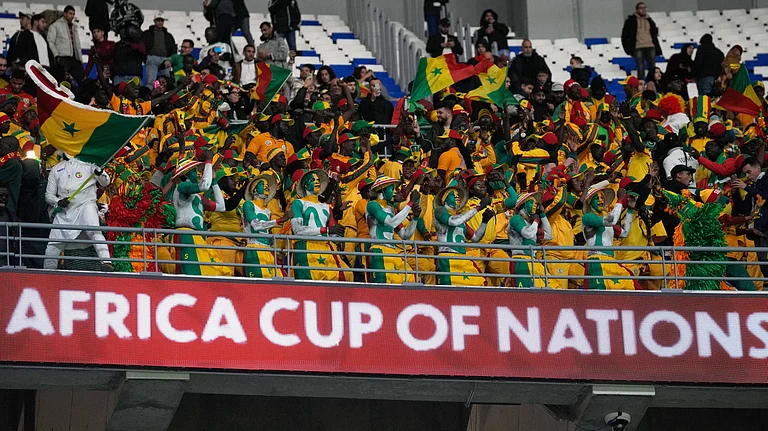S&P’s Signals
- Jul 11, 2008 Upside and downside risks to 'BBB-' rating are balanced
- Feb 24, 2009 Outlook revised to negative from stable
- Mar 19, 2010 Outlook revised to stable from negative
- Sep 20, 2011 Outlook stable; balances external flexibility, prospects for gradually improving fisc
- Nov 11, 2011 Stable outlook reflects our expectation of strong economic growth in medium term
- Feb 6, 2012 Stable outlook. Reflects expectation of strong economic growth in medium term, gradually improving fiscal performance
- Apr 25, 2012 Outlook revised to negative, signals at least a one-in-three likelihood of the downgrade
- Jun 8, 2012 India at risk of losing its investment-grade rating
***
Rating Rating Agencies
| Rating agencies | Outlook’s view | |
| “Mild erosion in India's external and fiscal profiles” | India is nowhere near defaulting on loans; it is extending support to IMF for tackling euro crisis | |
| “Country's investment climate hit by drift in decision-making” | Though some sectors are facing hurdles in clearances, investments of $71.5 billion seen in 2011-12 | |
| “Policy paralysis raises risk of ability to react to shocks” | Drift in policy space at the Centre is undeniable, but there is no dilution of safeguards particularly by RBI; most states remain proactive | |
| “Slowdown in expanded role of market forces, private sector” | Reversal of FDI in multi-brand retail and not freeing up diesel pricing have sent out a poor signal. But the space for private sector remains vibrant. | |
| “Lower GDP growth” | Efforts to check high inflation are affecting growth, which at over 6% remains second highest globally |
***
The end is near. Or so the rating agencies would have us believe. Two leading global rating agencies, Standard & Poor’s (S&P) and Fitch, downgraded the investment “outlook” for India this month. S&P recently warned that India could become the first BRICS nation to lose its investment-grade rating if it doesn’t step up reforms and improve the investment climate. All these moves have led to familiar cries of gloom, doom and despair about the future of the India story. Such has been the level of negativity that many now believe the economy is in “deep trouble”.
What has suddenly gone so wrong with India’s growth story that has led to such stern warnings about investing in the second-fastest growing economy? There is no denying that overseas investments in India have been showing signs of slower than expected growth. But investments have not dried up despite the periodic outcry from industry and the admonitory notes from rating agencies.
“Overall, I don’t agree with their negative outlook for Indian economy,” says Mahesh Vyas, MD of Centre for Monitoring Indian Economy (CMIE). Stressing that where sovereign rating is concerned, rating agencies rely on unreliable government data, CMIE’s own data reveals that “in investments, we are still doing quite well as $71 billion-worth of new capacity was created in 2011-12 in manufacturing, mining and services,” Vyas points out. Whether it was the capacity addition of 18 million tonnes in steel or of 19,000 MW in power generation, 2011-12 set new records. Consumption-led growth in major cities may have been hit by higher cost of living and overheads, but recent studies have shown that it remains robust in most parts of India.
In the wake of the 2008 global financial crisis, the failure of rating agencies to anticipate the crisis and their subsequent actions leading to a snowballing effect has not been forgotten. The erosion of faith in the rating agencies persists. “India should not be one grade over the junk grade, it should be at least bbb+ if not higher. Rating is ultimately an assessment of credit-worthiness,” says Abheek Barua, chief economist, HDFC Bank. Barua says the model of rating is based on variables that are very general, like the GDP or human development index, and overlooks specific parameters like the debt-to-GDP ratio (which in India’s case has been declining since 2010) or reserves to imports, and so on. Many economists and market analysts share the view that there is a lot of “interplay” against developing and emerging economies that gets reflected in the credit ratings.
It is true that India’s GDP growth has slowed down in recent months (it fell to an estimated 5.3 per cent year-over-year in the first quarter of 2012, from 6.1 per cent in the previous quarter) and the country suffered a mild erosion in its economic profile due to a widening current account deficit and the fiscal deficit exceeding the target for March 31, 2012, to reach 5.9 per cent of GDP. Inflation also remains stubbornly high despite the central bank’s efforts. While understanding the concerns about the Indian economy and the apparent slowdown in policymaking, experts point to the fact that there is nothing to indicate a crisis, the likes of which is being witnessed in the Eurozone. Though employment generation has been negligible, government data indicates growth in self-employment.
Pointing to the recent downgrade of the Steel Authority of India (SAIL), Paresh Khandwala, MD of Khandwala Securities Ltd, says it is a typical case of non-application. Faulting the criteria for ratings, Khandwala states the agencies should “come out clearly on what assumptions they have downgraded: political stability can’t be the criterion for financial stability of a country”.
Curiously, despite public sector companies enjoying the sovereign guarantee of the government as majority stakeholders, they get downgraded. Many private companies, including Satyam of yore, fail to be caught out. Unlike with India and Indian companies, several US and European companies that precipitated the 2008 financial crisis have never been downgraded or warned.
Shashanka Bhide of the National Council of Applied Economic Research does not share the view that there is any pressure tactics being used by rating agencies “though they might be going by the book”. Pointing to the economic indicators, Bhide says the Indian scenario is considerably worse than a year back. But still, “if they put India in the junk status that would be questionable,” he adds.
Essentially a guidance for investors to make informed decisions on whether their investments will fetch returns, ratings do have a role to play. But as agencies themselves concede, their ratings are only opinions. According to an investment guide, “They shouldn’t be viewed as assurances of credit quality or exact measures of the likelihood of default.” Pradip P. Shah, founder of CRISIL, India’s first credit rating agency, however, cautions that “investors ignore the rating agency only at their own risk”. Pained at the lack of policy push, Shah, who now heads IndAsia Fund, says, “No rating agency cares if you don’t act. But the symptoms highlighted need to be addressed. If our policies are not right, we will fritter away the advantages India has.”
The government response to the recent negative advisories was on anticipated lines. But there is no denying an element of truth to finance minister Pranab Mukherjee’s claim that between “April 2012 and now, there are no significant events to indicate that the economy’s vulnerability to shocks has increased.” Sure, one would want more action on many of the Budget promises—including pushing on with targeted subsidies, more employment generation and social infrastructure focus—but that is no reason for India to be projected as being in crisis mode. As North Block gears for change, hopefully it will usher in some much-needed vigour. A mood change would be helpful.


























